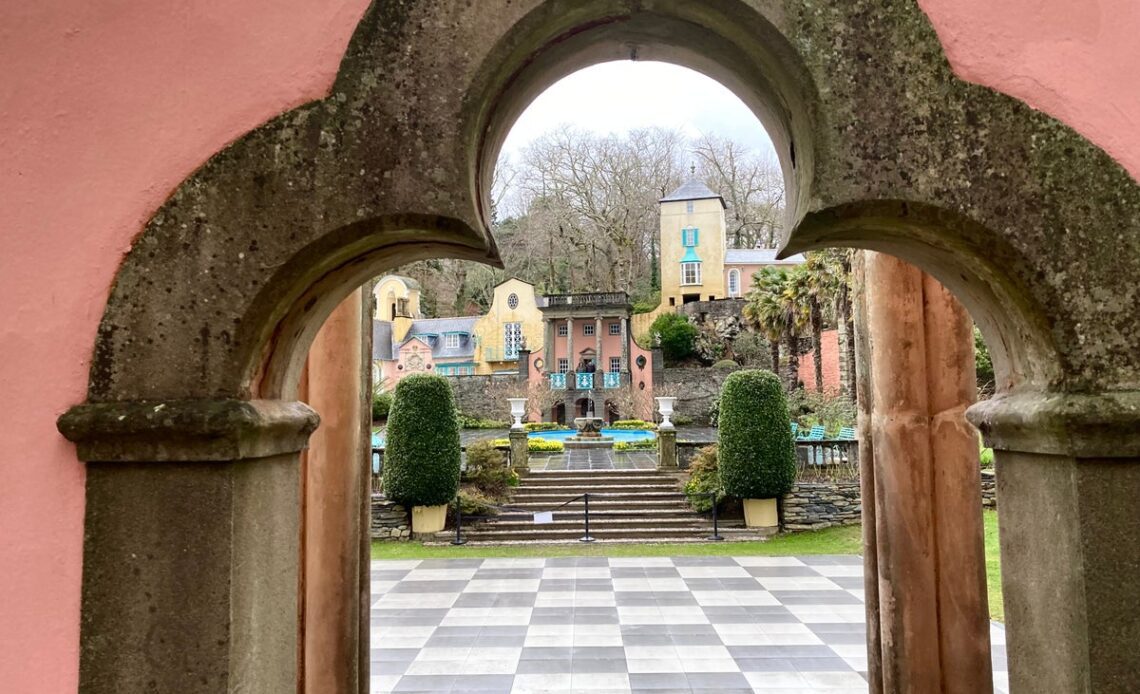A campanile perches on a hillside. Shuttered houses and palazzi in sorbet pinks, violets and lemons swirl up to a bauble-domed basilica atop a cliff. A graceful colonnade rises above a fountain-splashed, palm-rimmed piazza. Cobbled paths dance through ornate gates and arches, past stucco busts, shell grottos, ionic columns and Burmese dancers, a bronze of Hercules carrying the world on his shoulders. Walled terraces and loggias trip down to the glinting sea. Hot-pink camelias are blooming with the first whisper of spring.
Walking through the gates of Portmeirion is a Dorothy arrives in Oz moment: Wales in technicolour; Italy on acid. If I squint a bit and edit out the cold, spitty drizzle of a late-February day, the sheep, the rows of nodding daffodils, and the dark peaks of Snowdonia popping on the horizon – why yes, it’s almost the Amalfi Coast. But frankly I wouldn’t want to imagine myself anywhere else.
Camp, kitsch, ridiculously over the top – call it what you will, Portmeirion was the life’s work of architect Clough Williams-Ellis (1883-1978), a Northhamptonshire-born reverend’s son, who dreamed up this little Italy when he was just 23 years old. In 1925, he finally took out a £5,000 loan from the Midland bank to buy a “neglected wilderness”, six miles from his family home on the coast of North Wales, picturing a village wholly in tune with nature. With its cliffs and tide-shaped sands, the sheltered Dwyryd Estuary was perfect for his grand plans.
Portmeirion: Wales’s answer to Italy
(Kerry Walker)
Clough made Portmeirion a “home for fallen buildings”, salvaging ornate windows, panelling and ceilings, ironworks and coats of arms, sometimes entire buildings from demolition sites. The result was a pastiche of Italian Renaissance, baroque, neoclassical, Palladian and Arts and Crafts styles – an “architectural mongrel” designed for dramatic effect in trippy colours recalling warmer Mediterranean shores. One glance at Portmeirion and you might think William-Ellis was nuts. Not so. The man was apparently unemotional and even-tempered. But in architecture he unleashed his eccentric dreams and fulfilled his romantic vision.
“Clough Williams-Ellis worked with nature, embracing botanical hedges and arches to make things look bigger, using the topography of the cliffs to frame the estuary and mountains,”…
Click Here to Read the Full Original Article at The Independent Travel…
